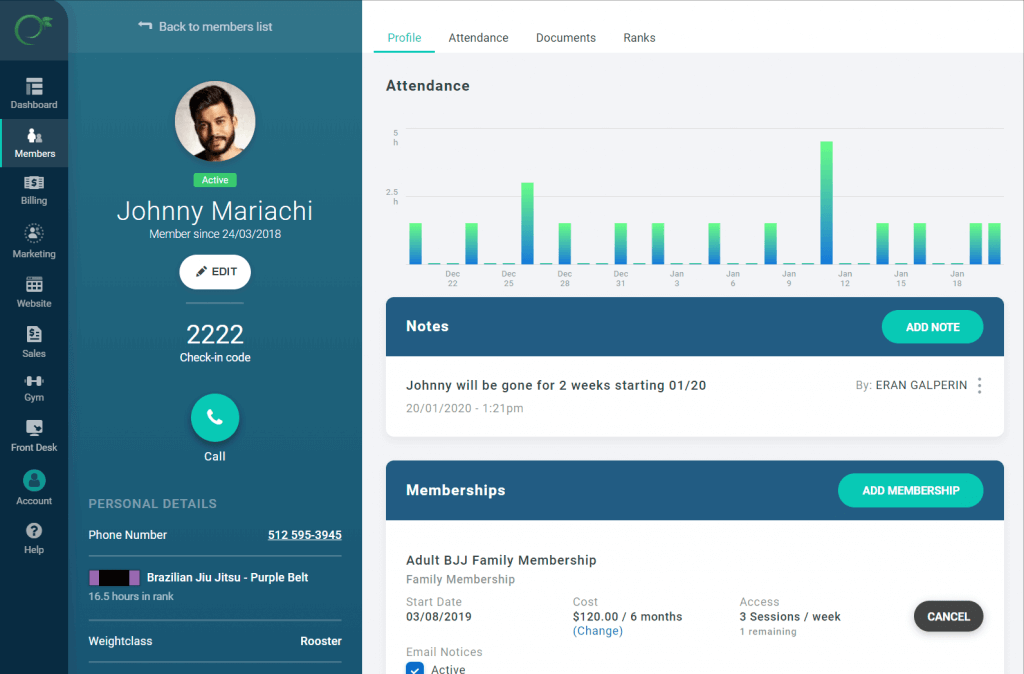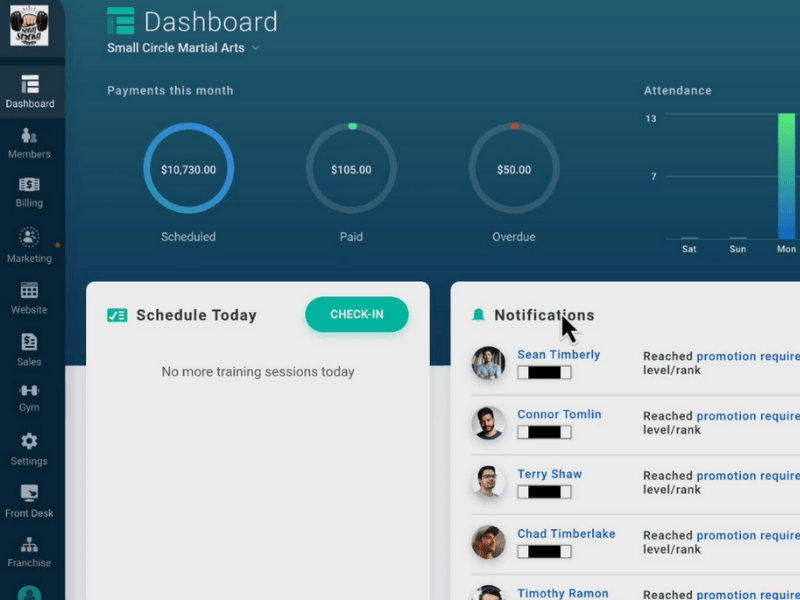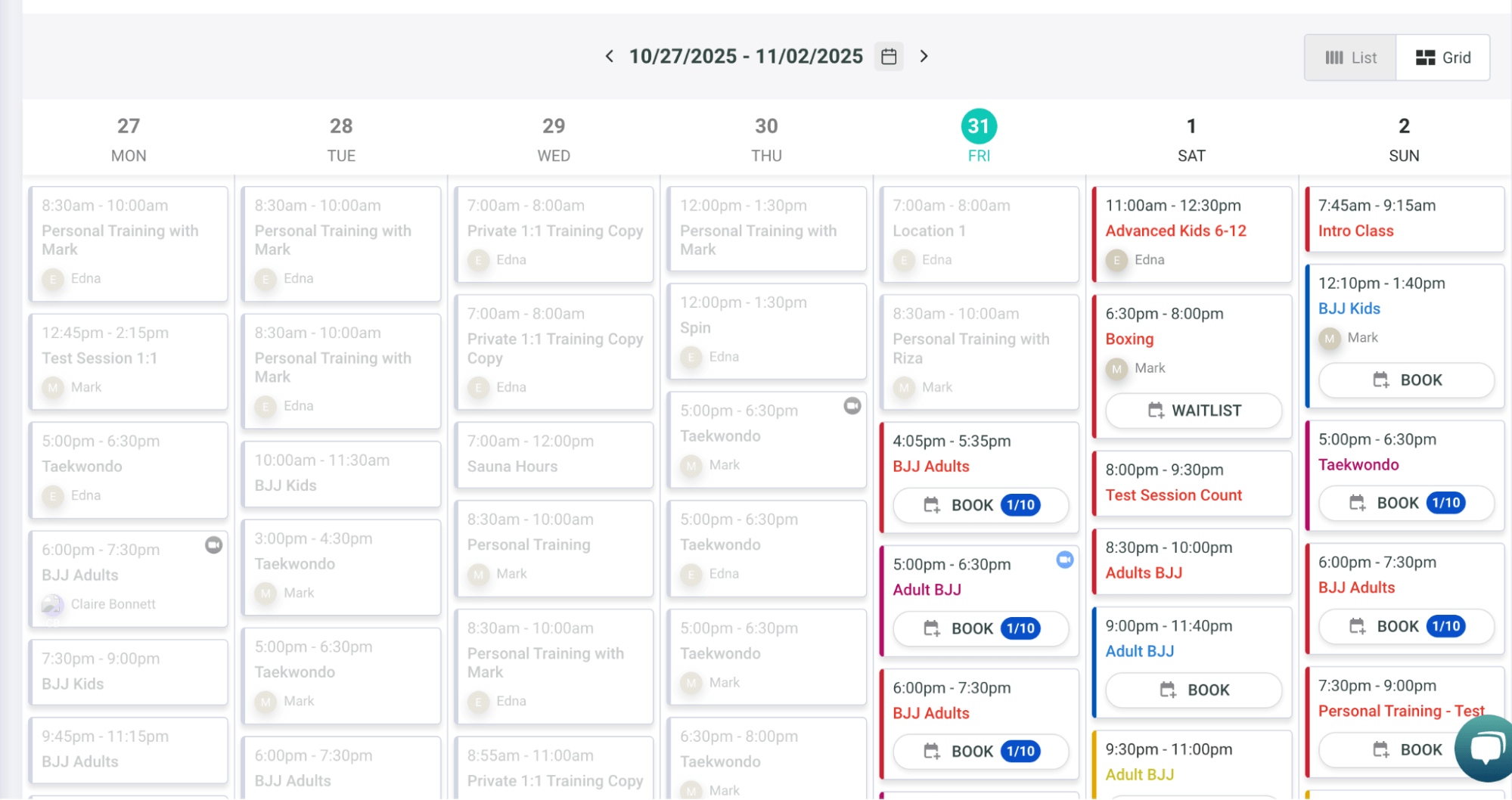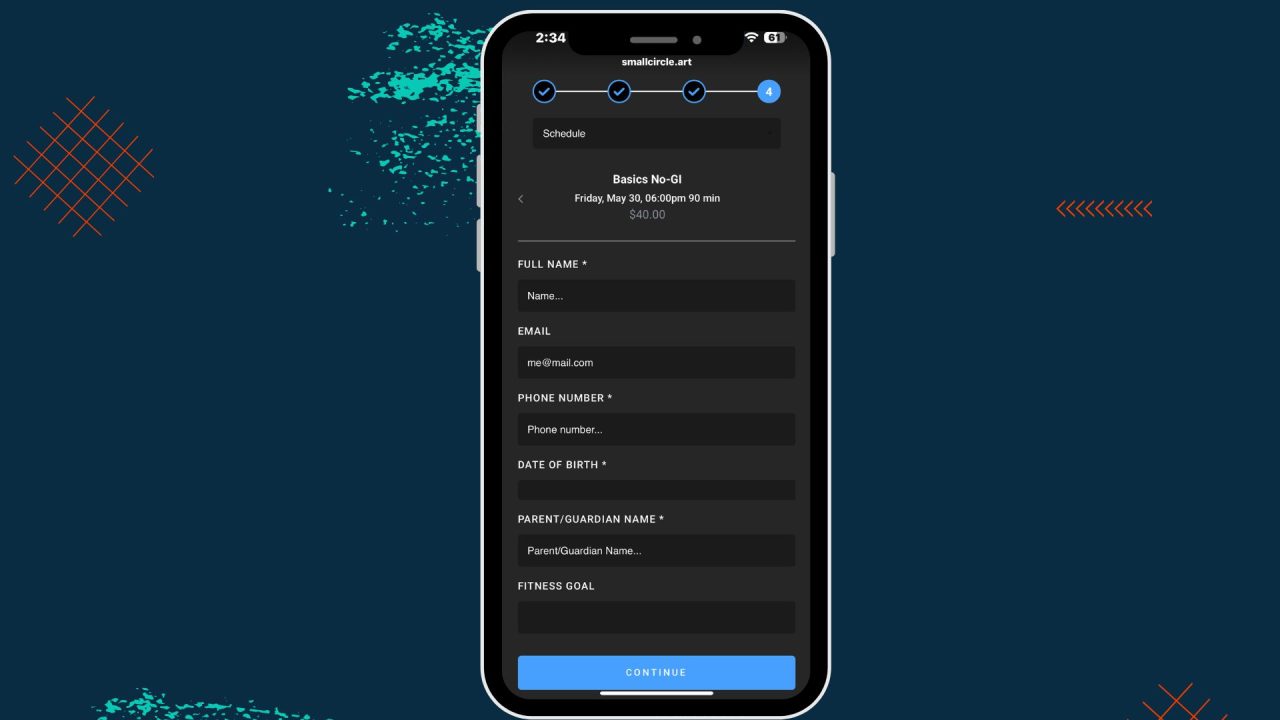How We Built the Best CRM for Martial Arts Schools

Before founding Gymdesk in early 2016, I had been training in Brazilian Jiu-Jitsu for close to a decade. From the east coast to the west coast in the US, to Japan and Israel, I've dropped in and trained regularly at many different locations.
Since I build software products for a living, I couldn't help notice how backwards some of the systems I had to interface with as a member or visitor in many of these places. For example...
- No online onboarding or profile access.
- Uncertainty regarding payments - from cash to Paypal and insecure online payment forms.
- Complete lack of visibility to my training record.
And this is only from the member's perspective. Over time I got exposed to the pain points from the manager's perspective as well, which were significant - From overly complicated set-up and user flows, to broken features and frustration using systems that look like they were built a decade ago.
So I decided to build better martial arts software.
The price kept going up while more and more restrictions were being added. We would contact customer support just for them to transfer me to another person who would then transfer us to another person, that would make us wait for an email that never arrived. Also it felt/looked like their software was stuck in the early 2000. Complete opposite of Gymdesk!
Stephen Cruz, Kioto BJJ Chattanooga on using Zen Planner
Building Better Martial Arts CRM software
As I was winding down my previous company in late 2015, I began looking into creating a modern solution for managing the operations of a martial arts school. But was there room for another software product in this crowded space?
My goal was to differentiate by offering a simple and user-friendly CRM tool that is easy to get started with, and makes everyone's lives easier - managers, members, visitors - while improving the bottom line. A tool that...
- Streamlines onboarding of new members - complete sign-up and waivers online or on a tablet, instead of using pen-and-paper with manual entry into long forms.
- Simplifies billing and reduces fees by integrating a modern payment provider that is focused on online and recurring payments. We started with Stripe, and now support Square and Authorize.net as well.
- Makes it easy to track attendance, to be able to keep track of members' progress in training and towards promotions.
- Provides integrated marketing features and lead tracking.
- And as bonus - provides a simple gym website with all the information prospective members would need.
- And everything working just as well on mobile devices and tablets.
After interviewing gym owners and prototyping over a 6 months period, we launched Gymdesk (previously Martial Arts on Rails) in early 2016: a modern cloud-based software for managing gyms and martial arts schools.
A little about my background - I've been a professional software developer since 2005 (started freelancing during college). I've started multiple software businesses previously, assuming the technical lead role in each. In the years prior to founding Gymdesk, I've expanded into product management and user experience design.
A martial arts CRM software that puts gym owners and staff first
Most martial arts CRMs and martial arts school management software are what I like to call "glorified spreadsheet" software. They provide a bunch of data tables, with forms for manual entry of different items, such as members, payments, and others. This process can be time intensive and tedious, leading to frustration and inefficiencies.
Most business software is basically that (often referred to as CRUD software - Create, Read, Update, Delete), with some user-interface slapped on top. However, the past decade or so saw a significant shift in the approach to designing user interfaces and flows, as software became more and more mainstream and more accessible.
Companies like Apple and Google have led the way by creating products that "just work," removing barriers for non technical people to use and enjoy their products.
I knew that if was going to build the best CRM for martial arts schools, I had to take the same approach with Gymdesk, and that meant focusing on putting the user (gym owners and staff) at the center, instead of the data. It meant helping them perform their everyday tasks with minimal effort and frustration, saving time and allowing them to focus on their members.
There are many ways in which we designed our software to achieve this, for example:
- Reducing the number of "clicks" and screens needed to achieve common tasks such as signing up a new member, or creating a payment.
- Grouping related functionality together and providing clear visual separation between different actions on the screen.
- Having cohesive "user flows", in which actions naturally lead to one another (such as the options presented after a member is signed up - allowing them to add a family member, a payment card or check-in).
- Using modern design principles and conventions - scannable content with unique interface elements that convey their purpose, judicious use of white-space, a minimalist design and a consistent use of color and typography.
And most importantly, encouraging user-feedback and using it to drive the development roadmap. The product we have today is almost unrecognizable compared to what we started with more than 4 years ago, and it's mostly due to listening to user feedback, and iterating over our user interface.
There are many considerations with regards to how to use user feedback to guide product development. You first need to understand what users actually need when they ask for a feature or a change, as they normally do not have the technical understanding of what's possible. As Henry Ford once said, "If I had asked people what they wanted, they would have said faster horses."
In addition, while you want to appease users and cater to their specific use-cases, you don't want highly user specific scenarios dominating your user experience.
Learning how to balance those concerns while making sure everyone's concerns are addresses was the main challenge we faced through the years while building our product and user-base, and it's through that process that we now have a product I'm confident to call industry-leading in simplicity and ease-of-use. Our customers seem to think so, too -
What can I say, I have tested many systems promising so much and in the end either too difficult to learn or just doesn't deliver. However, with Gymdesk it was completely different, easy to set up, easy to use and students / instructors love it. Been using their software coming up for 6 months and so far they get 10 out of 10.
Andrew Cameron, Wing Chun International
Focusing on building lasting relationships
One of the benefits of focusing on user feedback is that over the years we've built many close relationships with our users. They are not just our customers, but also our confidants and friends. They help us improve our product and we help them run their business better.
In keeping with our lean, modern approach - we don't have a phone support call center, or dedicated account managers or sales people. We do most of our customer support over Email and live chat on our website.
This does not work for everyone, as some people need to be able to pick up a phone and talk to someone. Unfortunately, that normally means they will typically get a low level support person on the other end.
Providing customer service over Email and chat, allows me to personally handle all support tickets, as I'm able to multitask while doing it. It might seem ridiculous to some that the founder and lead developer is the same person doing customer service, but I'm uniquely positioned to provide the best outcomes for customers as the person who understands both the technical aspects and business aspects of our product.
The founder provides the quickest personal attention ever. Customer attention and service is second to none.
Rich Beaupit, Straight Blast Gym Niagara
We also made it easier to get started for self-starters compared to our competition - There are no contracts or start-up fees. No sales person to through just to be able to see and feel how the software actually works. All account data is fully exportable in multiple formats, and we use 3rd party integrations for payments to avoid vendor lock-in with members payment information.

Constantly adapting and improving the best martial arts school software
When the COVID-19 pandemic started, many of our customers suffered a hit to their business and revenue. We did our best to accommodate by providing cost relief to those who needed it, and by adding features that helped gyms stay operational and even grow in the new reality.
From exclusive member content delivered through our online member portal, to a whole system for managing capacity through online bookings - we continued to listen to our users and adapt our product to provide the best experience under the current circumstances.
After returning to normalcy, we continue to improve our product and expand our offerings, never settling for what we have. This is why I believe we will continue to be the best CRM for martial arts school owners and staff.
Where are we now?
Since this post was originally published many years ago, Gymdesk has made big improvements to the software's capabilities and ease of use.
We overhauled our member management feature into a true CRM where you can see all their contact information at a glance, keep track of your correspondence with them, check attendance patterns, billing status, keep notes, and more.
Before, our email tool was basic. Now, we have a robust marketing automation feature that allows you to blend email and SMS together into trigger-based campaigns. This tool is more powerful than most other gym management software on the market and rivals dedicated email service providers.
Gym management software that frees up your time and helps you grow.
Simplified billing, enrollment, student management, and marketing features that help you grow your gym or martial arts school.





